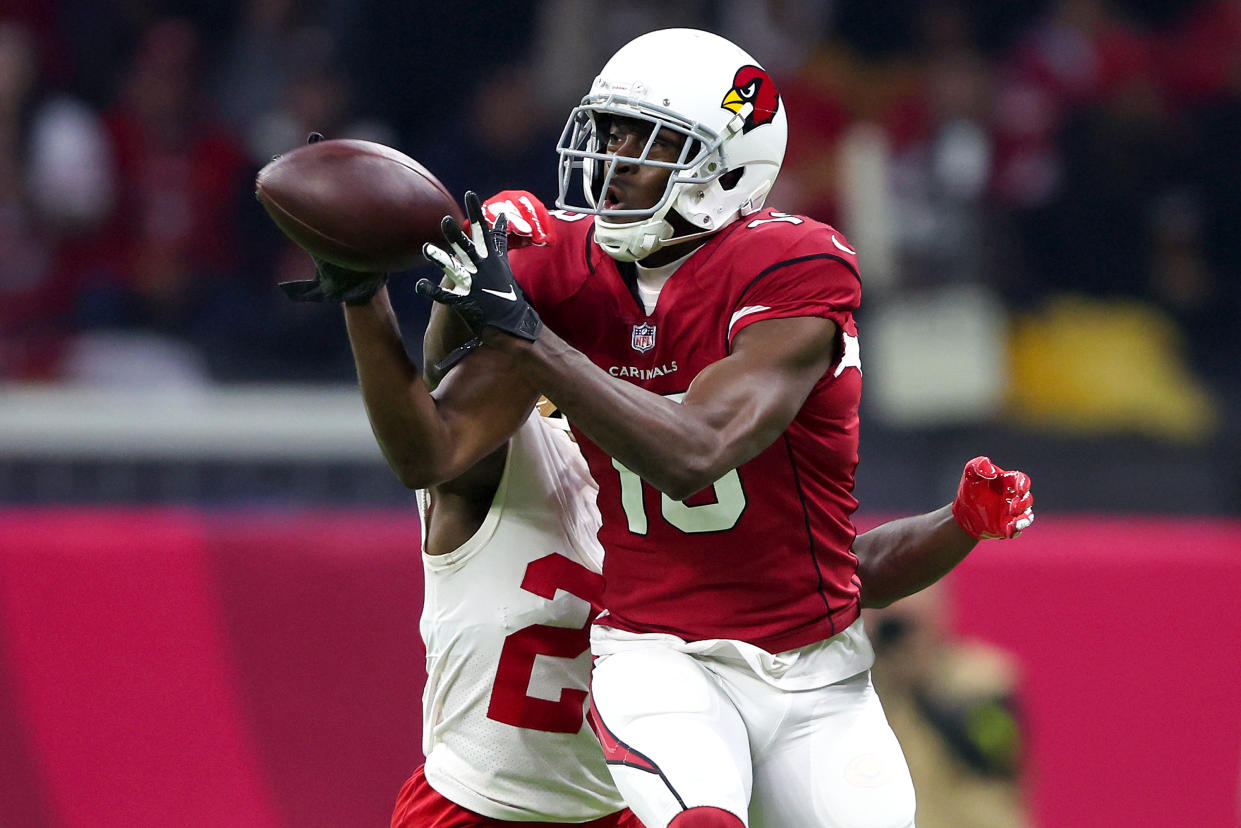A.J. Green announces retirement: Here's his fantasy football legacy
If I ask you to name a watershed season for rookie wideouts, you have some fun and interesting choices.
The canonical answer might be 2014, when Odell Beckham Jr., Mike Evans, Kelvin Benjamin, Sammy Watkins, Martavis Bryant and Jarvis Landry had a weekly game of Can You Top This? A.J. Brown, Terry McLaurin, Deebo Samuel, D.K. Metcalf and Diontae Johnson crashed the league in 2019. And the last three receiver classes have been excellent, giving us plenty of highlights and fantasy bliss.
But maybe the rookie class that changed the rules came at us in 2011. That’s when Julio Jones, Torrey Smith, Doug Baldwin and A.J. Green joined the NFL. And Green is going to be our spotlight player of the day.
Green announced his retirement Monday, the last transaction in a snappy 11-year career. Green made the Pro Bowl in each of his first seven seasons and topped 1,000 yards receiving in six of those years. He finished in the top 14 among fantasy wideouts five different times (WR4, WR4, WR8, WR10, WR14). And he spent plenty of time celebrating in end zones, with 70 spikes for his career, including three seasons in double digits.

Green’s rookie year was an instant smash — 65 catches, 1,057 yards and 7 touchdowns for the surprising 2011 Bengals. Green and Andy Dalton joined the team at the same time and pumped life into a stumbling franchise, sparking five straight playoff appearances and two division titles. Cincinnati earned just two playoff spots in the previous 20 seasons.
The fantasy attitude toward rookie receivers shifted in the 2010s, and that specific 2011 class had a big say in that. Green and Jones (54-959-8) were game-breakers from Day 1, and Smith had a useful 40-841-7 log. Green was the first rookie to top 1,000 yards since Marques Colston in 2006, and the newest first-round pick to do it since Michael Clayton (not the George Clooney character) popped in 2004.
Green’s rookie season stands up historically — it’s the 10th-best year from a rookie wideout based on standard scoring, and charts 11th if we shift to full-point PPR. Here I am now, entertain me.
Back in the early internet days, rookie receivers were viewed skeptically by the fantasy community. Once in a lifetime, you hit the Randy Moss detonation; once in a while, you found the fun Clayton season. More often than not, you were looking at a Darrius Heyward-Bey washout or a Troy Williamson miss.
The concept many fantasy managers adopted back then was to give young receivers time, and come back to them in Year 2 or Year 3. Players like Reggie Wayne, Plaxico Burress, Demaryius Thomas and Roddy White did little in their first seasons but eventually grew into stars.
Jones and Green helped establish what was possible right out of the box. And it jumpstarted a trend that continued through the decade. Consider the evolution of the 800-yard receiver in the NFL:
Rookie seasons with 800 or more receiving yards, by decade:
70s: 7 (mostly 14 games, mostly impossible PI rules)
80s: 13
90s: 14
00s: 12
10s: 26
20s: 14 (so far)— scott pianowski (@scott_pianowski) February 6, 2023
The pro and college games keep moving closer together, and most teams use three receivers as their base offense now. Early-drafted rookie receivers are no longer handed de-facto redshirt jerseys the day they join the NFL. They’re now expected to hit the ground running.
There was little learning curve needed for Green as a rookie. He caught a 41-yard touchdown pass in his first game and had six scores in his first nine games. Although the Bengals didn’t have other major threats in the passing game — Jerome Simpson was the team’s second-leading receiver — Green was able to thrive immediately.
In the peak of Green's career, he was a destination fantasy player. Over the 2011-17 span, he was the cumulative WR3 in standard scoring, trailing only Antonio Brown and Jones. It was common to land Green in the second round of fantasy drafts those days, often enjoying first-round production.
Green probably didn’t do enough to make a plausible Hall of Fame case. Although the Bengals secured those five straight playoff appearances, they lost all of those games. Green never had a signature playoff moment. He never led the league in any major stat category. And the second half of his career was marred by injuries; a toe problem cost him seven games in 2018, and an ankle washed out his full 2019 season. He was reasonably healthy the last three seasons — including two seasons in Arizona that we might forget in a few years — but couldn’t crack fantasy Top 40 at the receiver position. The NFL is a cruel game for 30-something wideouts.
But just like Green knew how to make an entrance, he also knew how to punctuate a star career. In his final NFL game, he gave us one more thrill, one more splash play. Have a look at David Blough winging it to Green off a gadget call back in Week 18, good for a 77-yard score.
That touchdown was a reminder of Green at his best. Green was capable of winning on any route, with the chops to score from anywhere on the field. Twenty-three of his touchdowns came from 30 yards and up, and 14 times he rang up a score from outside the 50.
Fare thee well, Mr. Green. Your Bengals never got close to a Super Bowl, but you played on countless fantasy champions through the years. We all tip our caps.
